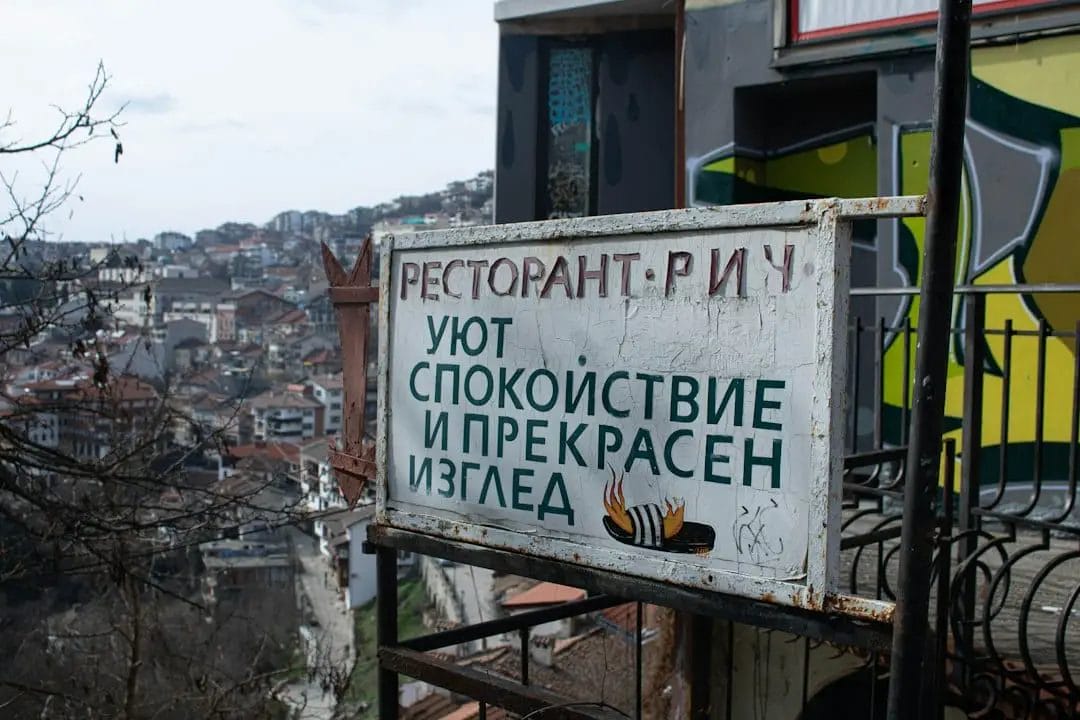Exploring the Languages Spoken in Serbia – Chasing Whereabouts
Planning your trip to Serbia and wondering What Languages Spoken in Serbia?
Serbia, a country located at the crossroads of Central and Southeast Europe, is home to a diverse linguistic landscape, encompassing a range of official, minority, and regional languages.
In this article, we will delve into the various spoken language in Serbia, their significance, and the role they play in shaping the cultural identity of the Serbian people. From the official status of the Serbian language to the significance of the Cyrillic and Latin alphabets, we will uncover the intricate tapestry of languages that contribute to the rich diversity of this nation.
Let us find more about it.
What are the official languages of 
Understanding the status of Serbian as an official language
The official language of Serbia is Serbian, a South Slavic language that holds a prominent position in the country’s linguistic landscape.
Serbian is not only the most widely spoken language in the nation but also serves as the primary means of communication in official and formal settings.
The status of Serbian as the official language underscores its significance as a unifying force that binds the diverse populace of Serbia.
Distinguishing the other official languages in Serbia
Aside from Serbian, other official languages in Serbia include Croatian, Bosnian, and Hungarian. These languages hold official status in regions where ethnic minorities reside, reflecting the country’s commitment to linguistic diversity and inclusivity.
The recognition of multiple official languages underscores the government’s efforts to accommodate and respect the linguistic rights of diverse communities within the country.
Overview of the dialects within the official languages
The official languages in Serbia encompass a rich tapestry of dialects that contribute to the linguistic mosaic of the nation. Dialectal variations within Serbian, Croatian, and Bosnian languages reflect the diverse historical and cultural influences that have shaped the linguistic landscape of Serbia over the centuries.
These dialectal nuances not only add depth to the linguistic heritage of Serbia but also underscore the dynamic nature of language within the Serbian context, showcasing how the languages are similar yet distinct.
What are the minority languages spoken in Serbia?
Exploring the regional and minority languages in Serbia
In addition to the official languages minority languages are officially recognized, Serbia is home to a myriad of regional and minority languages, each contributing to the cultural tapestry of the nation.
These languages, including Bulgarian, Croatian, and Torlakian, reflect the linguistic diversity that enriches the social fabric of Serbia, offering a glimpse into the historical and cultural mosaic of the country.
Importance of the minority languages in preserving cultural heritage
The minority languages in Serbia play a crucial role in preserving the cultural heritage of various ethnic communities.
These languages serve as living repositories of traditions, folklore, and historical narratives, safeguarding the distinct identity of minority groups within Serbia.
The preservation of these languages is intrinsically linked to the preservation of cultural richness and diversity within the country.
Challenges faced by minority languages in Serbia
Despite their cultural significance, minority languages in Serbia face challenges stemming from globalization, urbanization, and the predominance of dominant languages.
As a result, there is a need for concerted efforts to support and sustain these minority languages, ensuring their vitality and continued contribution to the multicultural tapestry of Serbia.
What are the regional languages spoken in Serbia?

Identifying the dialects of Serbian language
Within Serbia, the Serbian language is characterized by a spectrum of dialects that reflect regional variations and historical influences.
The Torlakian, a proto-Slavic language, is spoken in parts of southern Serbia, and it is similar to other languages of Bosnia and Herzegovina.
Šumadija-Vojvodina dialects are just a few examples of the rich tapestry of regional speech patterns that contribute to the linguistic diversity of the nation.
Uncovering the influence of foreign languages in Serbia
Foreign languages, particularly those with historical and cultural ties to the region, have also left their imprint on the linguistic landscape of Serbia.
The influence of languages such as Russian, Bulgarian, and Hungarian, especially in regions bordering their respective countries, underscores the dynamic interplay of languages and cultures within Serbia.
Significance of regional languages in specific areas of Serbia
Regional languages play a vital role in shaping the cultural and social dynamics of specific areas within Serbia. These languages are not only a means of communication but also serve as carriers of local traditions, values, and customs, enriching the tapestry of regional identities within the nation.
Serbian Alphabets
Serbian, the native language of many people in Serbia, is a fascinating language because it can be written using both the Cyrillic and Latin scripts. This means that the same language can be read and understood in two different forms, without any changes to the spelling of words.
While both the Cyrillic and Latin scripts are used to write Serbian, the standard and most commonly used script is Cyrillic.
In Serbian, words are written phonetically, meaning they are spelled as they sound. To help you visualize this, here’s a brief overview of the Serbian Cyrillic alphabet and how it corresponds to the Latin script:
To give you an idea, here’s a quick look at the Serbian Cyrillic alphabet and how it looks in Latin script:
- А а (A a) – (Serbian and Croatian languages)
- Б б (B b)
- В в (V v)
- Г г (G g)
- Д д (D d)
- Ђ ђ (Đ đ)
- Е е (E e)
- Ж ж (Ž ž)
- З з (Z z)
- И и (I i)
- Ј ј (J j)
- К к (K k)
- Л л – This Cyrillic letter is used in the Serbian language, which is in official use in the Republic of Serbia. (L l) – A letter used in the native language of Serbians.
- Љ љ (Lj lj)
- М м – A letter found in the Cyrillic script of the Serbian language, one of the official languages of the Republic of Serbia. (M m)
- Н н (N n)
- Њ њ (Nj nj)
- О о (O o)
- П п (P p)
- Р р (R r)
- С с (S s)
- Т т – This character is part of the Proto-Slavic language, used in the native Serbian language which people speak in Serbia. (T t)
- Ћ ћ (Ć ć)
- У у (U u)
- Ф ф – One of the letters of the Serbian alphabet which is in official use in Serbia. (F f)
- Х x (H h)
- Ц ц (C c) – This character holds value in the Serbian and Croatian languages, highlighting the similarities between them.
- Ч ч (Č č)
- Џ џ (Dž dž)
- Ш ш (Š š)
So luckily, the Serbian alphabet is very phonetic because each letter stands for a certain sound. This is very helpful if you want to learn the language because most words are pronounced the same way they are written.
What is the significance of the Serbian Cyrillic and Latin alphabets?
Understanding the historical and cultural importance of Serbian alphabet
The Serbian Cyrillic and Latin alphabets hold immense historical and cultural significance within the linguistic heritage of the country. The Cyrillic script, in particular, has deep-rooted historical connections to the Orthodox Christian tradition and is considered a symbol of cultural identity and national heritage in Serbia.
Comparing the use of Cyrillic and Latin alphabets in Serbia
Serbia’s use of both the Cyrillic and Latin alphabets reflects the nation’s linguistic duality and cultural diversity. While the Cyrillic script holds a special place in the cultural and historical identity of Serbia, the Latin alphabet is also widely used, showcasing the coexistence of multiple writing systems within the country.
Impact of the alphabet on the linguistic diversity in Serbia
The use of Cyrillic and Latin alphabets contributes to the linguistic diversity of Serbia, allowing for the expression of cultural and historical nuances through distinct writing systems. This linguistic diversity further enriches the multifaceted identity of Serbia, underscoring the interplay of language, culture, and heritage within the nation.
How does language play a role in the cultural identity of Serbians?
Exploring the connection between language and cultural identity in Serbia
The Serbian language is intricately woven into the cultural fabric of the Republic of Serbia, serving as a cornerstone of national identity and heritage. The diverse linguistic tapestry, encompassing a multitude of official, minority, and regional languages, reflects the rich cultural amalgam that defines the Serbian people and their historical narrative.
Examining the influence of language on social and regional dynamics
Language exerts a profound influence on the social and regional dynamics within Serbia, shaping interpersonal interactions, cultural practices, and societal norms. The coexistence of multiple languages and dialects underscores the diverse regional identities and cultural nuances that contribute to the vibrancy of Serbian society.
Impact of language diversity on the unity and diversity of the Serbian people
The linguistic diversity within Serbia, encompassing a multitude of languages and dialects, serves as a testament to the unity in diversity embraced by the Serbian people. This diversity not only fosters inclusivity and cultural exchange but also reflects the resilience and adaptability of Serbian society in embracing and celebrating its multifaceted linguistic heritage.
What Language is Serbian Closest to?
Serbian is a South Slavic language and is closely related to other Slavic languages such as Bosnian, Croatian, and Montenegrin.
These languages are all mutually intelligible to some extent, as they share a common linguistic heritage and have many similarities in grammar, vocabulary, and pronunciation. Croatian and Serbian, in particular, are very closely related, and many linguists consider them to be two standard forms of the same language.
In fact, speakers of Serbian and Croatian can generally understand each other with minimal difficulty.
Furthermore, Serbian also shares similarities with other Slavic languages such as Slovenian, Bulgarian, and Macedonian, although these languages belong to different subgroups of the Slavic language family.
Despite these connections with other languages of Bosnia and Herzegovina, Serbian maintains its distinct identity and holds a unique place within the Slavic linguistic landscape, prominently in the Republic of Serbia and as a language in official use.
How do you say hello in Serbia?
In Serbia, there are different ways to say hello based on the time of day and the level of formality:
- Zdravo (Здраво): This is a general and commonly used greeting that can be used throughout the day in both formal and informal settings.
- Dobro jutro (Добро јутро): This means “good morning” and is used specifically in the morning until around noon.
- Dobar dan (Добар дан): This means “good day” and is used during the daytime, from around noon until late afternoon or early evening.
- Dobro veče (Добро вече): This means “good evening” and is used in the evening, typically from late afternoon or early evening until night.
- Ćao (Чао): This is an informal way of saying hello, similar to “hi” or “bye.” It is commonly used among friends and acquaintances.
Remember that the level of formality and the appropriate greeting may vary depending on the context and the relationship between the people involved.
Conclusion:
I believe I have answer what is the Languages Spoken in Serbia fairly well. Yes, Serbian is the main language but there are more languages spoken as well like Bulgarian Language and Croatian, and Torlakian.
So I think now I prepared you to make a Serbian Friend next time when you are in Serbia you already know the official language of the country and now you just have to practice the Serbian language and Cyrillic script.
Also English is by far the most popular foreign language spoken in the country so you will not find a problem when you are visiting cities like Belgrade, Novi Sad, and Niš.
You don’t have to talk like a native Serbian speaker but just know some Serbian words
FAQ
Can you live in Serbia without speaking Serbian?
Yes, it is possible to live in Serbia without speaking Serbian. Many expatriates and foreigners live and work in Serbia without knowing the local language. In major cities like Belgrade, Novi Sad, and Niš, you can find a diverse international community where English is widely spoken. However, learning some basic Serbian phrases and expressions can greatly enhance your experience and help you navigate daily life more easily. Additionally, knowing the local language can also make it easier to interact with locals and immerse yourself in the culture.
Q: What language do they speak in Serbia?
A: The languages spoken in Serbia include Croatian, Bosnian, Serbian, and Russian. Standard Serbian is also used.
Q: Is Serbian the only language spoken in Serbia?
A: No, in addition to Serbian, Croatian, Bosnian, and Russian are spoken in different parts of Serbia.
Q: Which regions in Serbia primarily speak Croatian?
A: While Croatian, another similar language, is primarily spoken in the province of Vojvodina and in some other parts of Serbia, Serbian remains the language in official use.
Q: Is Russian widely spoken in Serbia?
A: Russian is not widely spoken in Serbia, but it is used by a small portion of the population, especially in regions with historical ties to Russia.
Q: What is the official language of Serbia?
A: Serbian is the official language of Serbia and is used for all official communication and documentation.
Q: Are Serbian and Russian considered standard languages in Serbia?
A: Yes, both Serbian and Russian are considered standard languages in Serbia, with Serbian being the primary and official language.
Q: Are the languages spoken in Serbia similar to each other?
A: Yes, the languages spoken in Serbia, such as Serbian, Croatian, and Bosnian, are closely related and share many similarities due to their common roots in the Serbo-Croatian language.
Q: Can people in Serbia learn languages other than Serbian?
A: Yes, in addition to learning Serbian, people in Serbia have the opportunity to learn other languages, including English, German, French, and others.
Q: What are the regional or minority languages spoken in Serbia?
A: In addition to the main languages, Serbia recognizes and supports the use of regional or minority languages, such as Hungarian, Romanian, Slovak, and others, in specific regions of the country.
Q: Is Serbian also spoken in other countries?
A: Yes, Serbian is spoken in neighboring countries such as Bosnia and Herzegovina, Croatia, and Montenegro, where it is often referred to as the national language and used in official contexts.


